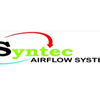Understanding the Importance of Proper Air Handling Unit Design
In the realm of HVAC systems, the role of air handling units (AHUs) cannot be overstated. These units are the unsung heroes behind the scenes, responsible for regulating air quality and ensuring a comfortable indoor environment. Proper air handling unit design is crucial to achieving an efficient and effective HVAC system. At SyntecAirflowSystem, we recognize the significance of this, and in this blog, we'll delve into the key factors that contribute to optimal AHU design.
The Importance of Air Handling Units
Air handling units are the workhorses of HVAC systems, responsible for the circulation, filtration, and conditioning of air within a building. They play a pivotal role in maintaining temperature, humidity, and air quality, making them essential for both comfort and productivity in various environments, from offices to manufacturing facilities.
1. Sizing and Capacity Calculation for Effective Air Distribution
Airflow Requirements: The first step in AHU design is to determine the required airflow for the space it serves. Accurate calculation of airflow ensures that the unit can provide adequate ventilation and thermal comfort.
Calculating Heating and Cooling Loads: Understanding the heating and cooling demands of the space is crucial. This involves evaluating factors such as solar gain, occupancy, equipment, and insulation.
Determining Air Change Rates: Proper air change rates are essential for maintaining indoor air quality. They vary depending on the type of space (e.g., offices, hospitals, labs) and must be accounted for in AHU design.
Selecting Appropriate Unit Capacity: Oversized or undersized AHUs can lead to inefficiencies. SyntecAirflowSystem specializes in selecting the right unit capacity to match the specific requirements of your project.
2. Energy Efficiency and Sustainable Design Practices for AHUs
Incorporating Heat Recovery Systems: Energy-efficient AHUs often include heat recovery systems to capture and reuse heat that would otherwise be wasted. This significantly reduces energy consumption.
Optimizing Fan Selection and Control Strategies: Proper fan selection, along with control strategies, can lead to significant energy savings. Variable-speed fans, for example, adapt to the required airflow, reducing energy consumption during low-demand periods.
Using Variable Air Volume (VAV) Systems: VAV systems adjust the airflow based on the specific needs of different zones, optimizing energy use and maintaining comfort.
Implementing Energy-Efficient Filtration Options: Efficient filtration not only improves indoor air quality but also reduces energy consumption by preventing dirt and debris from clogging the system.
3. Air Quality Considerations: Filtration, Ventilation, and IAQ Standards Compliance
Filtration Options for Different Applications: The right filter choice depends on the application. HEPA filters for healthcare facilities, for instance, are different from those used in office buildings. We help you select the ideal filtration solution.
Ventilation Requirements Based on Occupancy: SyntecAirflowSystem considers occupancy and building codes to ensure proper ventilation, which is crucial for maintaining a healthy indoor environment.
Cleaning the Air Through Effective Filtration: High-efficiency filtration systems play a key role in removing particulate matter and contaminants from the air, contributing to a healthier indoor space.
Maintaining Indoor Air Quality (IAQ) Standards Compliant: Compliance with IAQ standards is a non-negotiable aspect of AHU design. Our designs are aligned with the latest IAQ regulations.
4. Noise Reduction Techniques for Quieter AHU Operation
Noise Sources in AHUs: Noise from AHUs can disrupt the peace and productivity of indoor spaces. Identifying and addressing noise sources is vital.
Noise Control Measures Including Acoustic Insulation: We implement noise-reduction measures, including acoustic insulation, to ensure quieter AHU operation.
Fan Selection Considerations to Minimize Noise: The selection of fans plays a crucial role in noise reduction. We opt for quieter fan options without compromising performance.
Location and Design of AHU to Reduce Noise Transmission: The placement and overall design of AHUs are critical in minimizing noise transmission to occupied spaces. Our designs are optimized for noise reduction.
Conclusion: Achieving Optimal Air Handling Unit Design for Enhanced HVAC Performance
In summary, air handling unit design is a multifaceted process that impacts the efficiency, sustainability, air quality, and noise levels within a building. SyntecAirflowSystem is dedicated to optimizing AHU design to ensure the enhanced performance of HVAC systems. Our commitment to energy-saving practices, sustainable solutions, and air quality optimization makes us your trusted partner for achieving the best in HVAC technology. With SyntecAirflowSystem, your comfort and well-being are our top priorities.
For more information on how we can help you optimize your AHU design and elevate your HVAC system's efficiency, visit SyntecAirflowSystem.

No comments yet